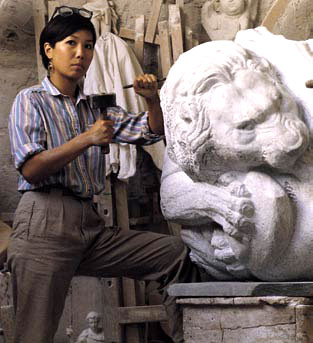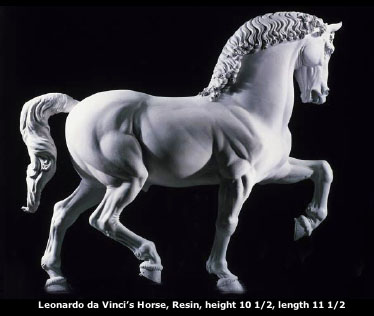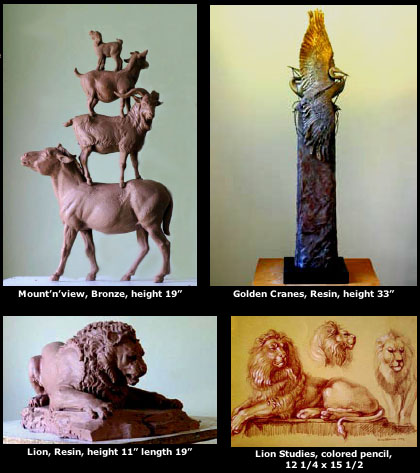|
Nina Akamu
|
||||||
|
Nina Akamu was born in Midwest City, Oklahoma. She studied drawing, anatomy, and painting with Joseph Sheppard at the Maryland Institute College of Art, where she earned her Bachelor of Fine Arts degree. After graduating in 1977, Akamu became a full-time sculptor, and in 1979 she moved to Florence, Italy, where she continued her training with Sheppard. Akamu lived in Florence for five years, where she studied first-hand the great masterpieces in the city’s museums. While living in Florence, she became a member of the National Sculpture Society; she was the youngest artist accepted since the Society’s formation in 1883. In 1984, Akamu moved to Pietrasanta, Italy a world-renowned environment for the creation and production of sculptural works. Akamu lived in Pietrasanta for seven years, learning the techniques of marble carving and the various processes used in the creation of bronze sculpture. Akamu received worldwide acclaim when she was commissioned to create a sculpture of a horse, based on a monument that had been designed, but never completed, by Leonardo da Vinci. In the 15th century, Leonardo was commissioned to create a bronze horse, 24 feet tall. For years, Leonardo worked on the design and the molding and casting processes for the monument, but when French troops invaded Milan in 1499, they destroyed Leonardo’s 24-foot clay model for the horse. He never completed the sculpture. Creating this tribute to Leonardo was an artistic challenge. “The unavailability of exact visual references necessary to a project of this magnitude created a wide latitude for interpretation,” wrote Akamu (1999) in her sculptor’s statement. When planning her sculpture, Akamu studied Leonardo’s writings on anatomy, painting, sculpture, and nature and his notes and sketches for the horse. She also took the writings of scholars and art historians into consideration. “The sculpture which I created . . . pays homage to the creative genius of Leonardo,” Akamu wrote. “It is not intended to be a recreation of his sculpture. However, it has been significantly influenced by certain works of art and writings from that period, and specifically Leonardo’s notebooks and accompanying drawings.” In 1999, 500 years after the destruction of Leonardo’s clay model, Akamu’s sculpture, The Horse, was erected in Milan, Italy, near the site where Leonardo’s horse was to have stood. The Horse has been featured in prominent national and international publications, and Time Magazine Europe and Time Asia named it one of the Top Ten Designs of 1999. A second horse, The American Horse, was cast from the same model and is on display at the Frederik Meijer Gardens and Sculpture Park in Grand Rapids, Michigan. Recently, Akamu created a sculpture for the Memorial to Japanese American Patriotism in Washington, D.C. The monument honors the Japanese American soldiers who fought and died in World War II and memorializes the experiences of Japanese Americans who were confined in internment camps during the War. Akamu’s 14-foot, gold-plated bronze sculpture depicts two bronze cranes struggling to free themselves from strands of barbed wire. The National Sculpture Society awarded this sculpture the prestigious Henry Hering Award in 2002. In more than 25 years as a professional sculptor, Akamu has received national awards from prestigious organizations such as the National Academy of Design, the National Sculpture Society, Allied Artists of America, the National Arts Club, and the Society of Animal Artists.ReferenceAkamu, Nina. 1999. Sculptor’s statement. (24 July 2004). |
||||||
 |
||||||
 |
||||||
 |
||||||